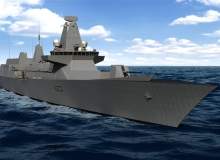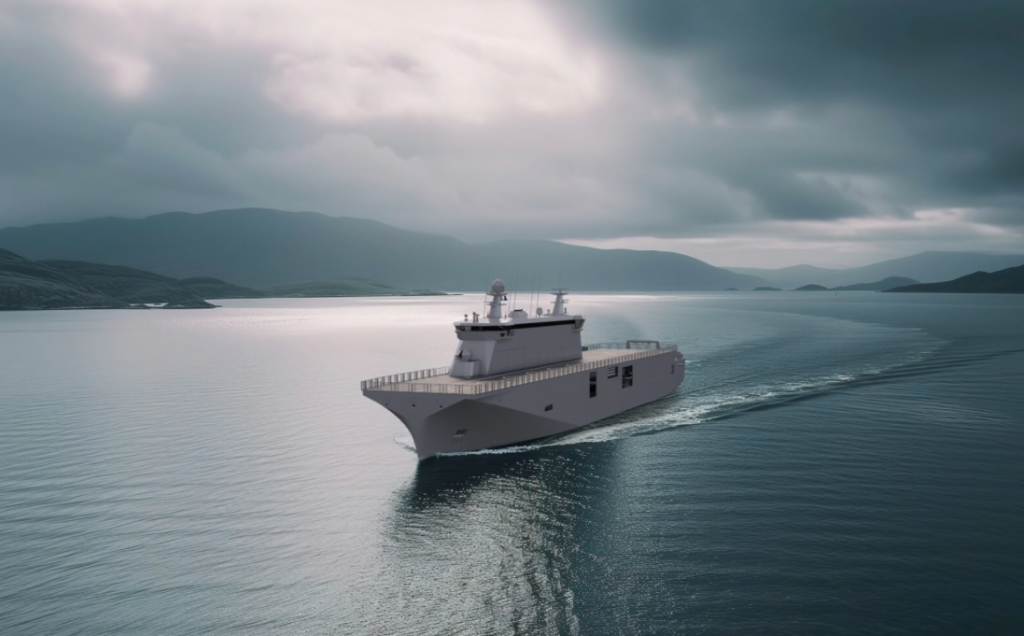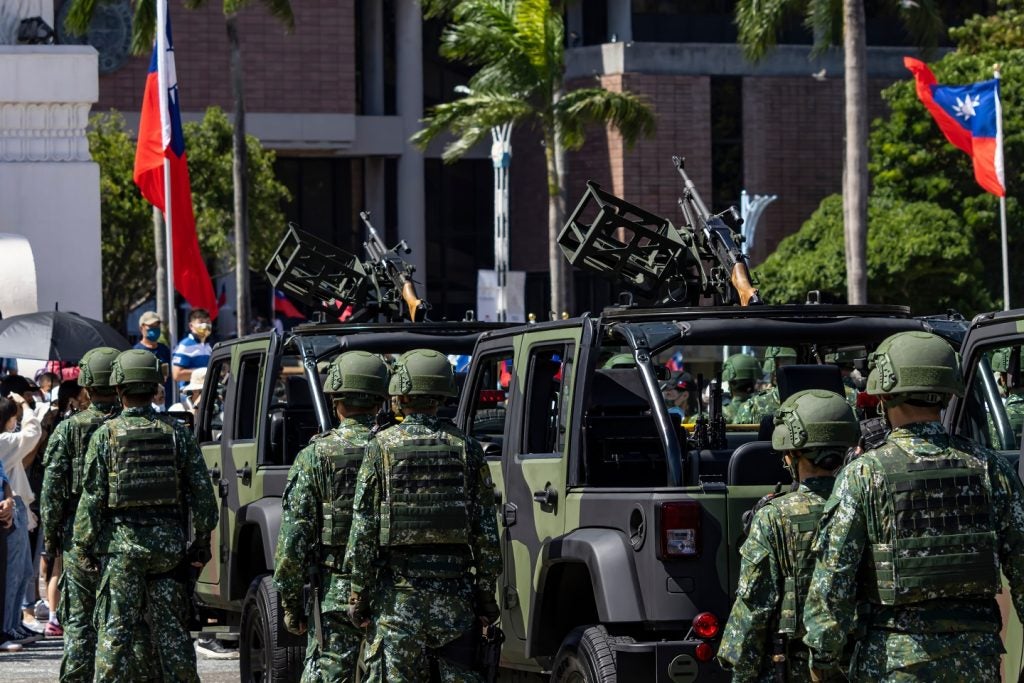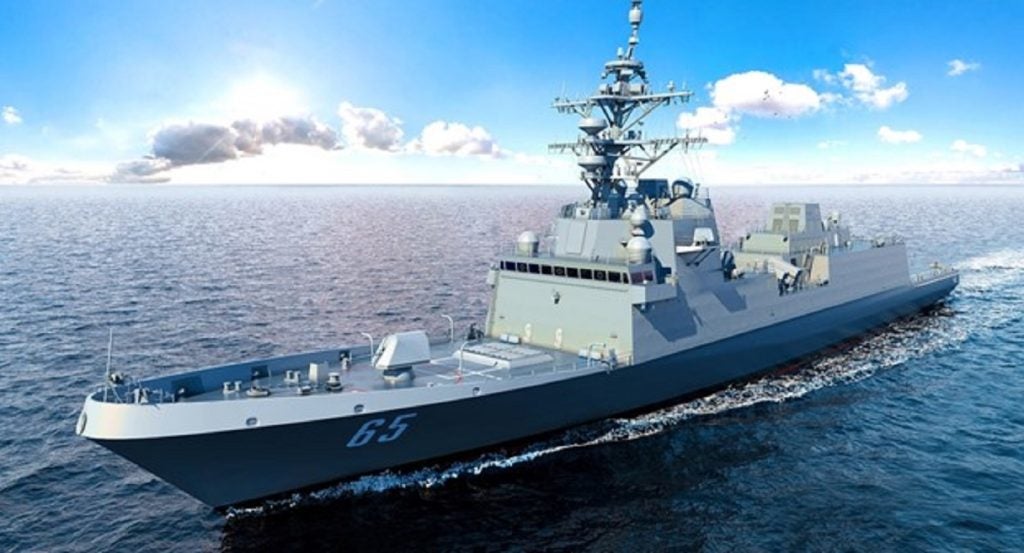
Modern navies are becoming more and more accustomed to dealing with military operations other than war (MOOTW) and increasingly, the need to deal with humanitarian relief in the aftermath of natural disasters, provide emergency medical care, or establish a helicopter platform for replenishment or evacuation, places new demands on vessels and their crews.
At the other extreme of the MOOTW spectrum, the call for naval involvement in border protection, piracy interdiction and long-range counter-terrorist actions has never been greater in recent history – that is quite aside of any involvement in actual offshore or littoral war fighting.
The ability to offer a total force package which encompasses strategic sea-lift and amphibious / air / sea operations capability from a largely self-reliant mother ship, able to operate for sustained periods at sea and across a range of mission profiles, has a clear appeal and for smaller navies – and larger ones with their budgets under squeeze – the logic is proving compelling.
The idea is not new, there are MRVs already at sea – the likes of the Royal Danish Navy’s (RDN) Flyvefisken Class (also known as ‘Standard Flex’), New Zealand’s HMNZS Canterbury and others – but now, the design concept is being taken even further.
How well do you really know your competitors?
Access the most comprehensive Company Profiles on the market, powered by GlobalData. Save hours of research. Gain competitive edge.

Thank you!
Your download email will arrive shortly
Not ready to buy yet? Download a free sample
We are confident about the unique quality of our Company Profiles. However, we want you to make the most beneficial decision for your business, so we offer a free sample that you can download by submitting the below form
By GlobalDataMultirole helicopter dock ship (Blohm + Voss)
ThyssenKrupp Marine Systems subsidiary Blohm + Voss played a significant part in establishing the kind of flexibility that underpins the modern MRV, bringing enhanced modularity and standardised interfacing to weapons and electronics systems with their MEKO approach back in the 1970s.
See Also:
This technology went on to spawn a range of successful vessels, including multipurpose frigates – most notably the MEKO 200 – which have demonstrated the value of their inherent multimission capabilities, reduced signature and high survivability over a quarter of a century.
Based on proven super-fast ferry and fast monohull cruise liner designs, the latest generations – their 4,000 ton small / medium MRVs and 20,000 ton multirole helicopter dock ships (MRHDs) – are intended to offer wide adaptability across a spectrum of mission scenarios.
The MRHD in particular offers exceptional scope, with floodable well-docking for amphibious craft, 1,000 lane metres for vehicles and / or containers, up to 4,000 square metres of main flight deck, six landing pads and extensive helicopter hangar space adding up to impressive sea-lift and sea-base capabilities – all independent of shore facilities.
Configurable for command and control operations, offering accommodation of up to 920 berths for embarked naval / military personnel, or to provide large-capacity hospital or temporary refugee housing, with a range of 8,000 nautical miles at 16 knots, the 192-metre MRHD is a serious contender in the multimission stakes.
Global combat ship (BAE Systems)
BAE is also developing a high-end, multirole craft in the form of its global combat ship (GCS), which will be supplied in a range of main variants, including the UK Type 26 – the first of two classes of vessels to emerge from the Royal Navy’s future surface combatant (FSC) programme.
Expected to enter service in the next decade, Type 26s together with the second FSC version are tipped to account for half of the front-line RN personnel by the mid-2030s.
While versatile, multimission adaptability is central to the design, other factors have also been taken into account, including inherent flexibility for anticipated future demands and affordability in terms of construction and service-life support costs.
The potential exportability of the finished ships has not been overlooked either, with selected international partners being invited to play a part in helping influence GCS development.
According to the November 2011 reference design, the 148m long vessel has an endurance of 7,000 nautical miles at 15 knots and affords a total of 130 crew berths and additional accommodation for a further 36 embarked military or civilian personnel.
The GCS’s large flight deck can land a Chinook or similar heavy-lift helicopter and the vessel’s main hangar will take a light or medium-lift helicopter with provision for UAV operation, while flexible mission space can accommodate four 12 metre sea boats, a range of manned / unmanned air, submarine and surface vehicles together with up to 11 ‘capability modules’ in 20ft containers.
A range of appropriate weapons, sensor and radar systems can be fitted to suit the required role and user requirements, rounding off BAE’s deliberately modular approach to design and integration to maximise flexibility and facilitate upgrades as threats continue to develop.
MRV (Austal)
Austal’s MRV is another notable instance of adaptable, high-tech, multirole craft design.
Considerably smaller than the preceding examples, it is based on the company’s unique and proven trimaran seaframe, blending impressive speed and performance with unparalleled deck-space for a platform of its size.
At 80 metres long, it is less than half the length of the MRHD and around two-thirds that of the Austal-designed US Navy’s Independence-Class littoral combat ship (LCS), which shares the same three-hull form. This has led some to describe it as an LCS ‘on the cheap’, but despite the design similarities, operationally a fairer comparison might be drawn with the earlier, and larger, RDN’s Absalon-Class vessels.
Onboard accommodation comprises 87 berths and the vessel has a range of 4,500nm at 12 knots. Coupled with 500 square metres of mission deck, 290 square metres of flight deck and hangar space for one NH-90 type helicopter, the extensive mission configurability of the MRV offers significant offshore and littoral capacity in a relatively small package, with all the inherent sea-keeping and efficiency advantages of the trimaran hull-form.
While no single multirole vessel is ever likely to be able to out-perform a specialist one for the given task – or replace a naval task force, for that matter – the key advantage of the MRV lies in its inherent flexibility and its ability to meet a wide range of needs, adequately and in a timely manner.
Beyond its implications for the traditional role of naval force, and aside from the ever-present need to be able to respond to disaster, this in-built adaptability may also prove a significant benefit when it comes to countering new threat scenarios as they evolve.
The allure of the MRV to the world’s navies would seem assured for some time to come.







